|
TennisOne Lessons
Anticipation and Footwork
by Julio Yacub Realizing where your opponent intends to aim the next shot is a big weapon against his strategy. Anticipation will neutralize his attack (keeping the ball in play effectively) and might force him into a defensive plan, shifting the percentage to your side (an offensive or attacking game has a higher Anticipation is a matter of:
Also consider:
In figure1, there are two patterns of play. Player A keeps the ball crosscourt, rallying patiently (high percentage 1), and player B, hits a more aggressive shot without realizing that his opponent reacts under pressure with another crosscourt shot (automatically). As in any other case, every player should be ready for any shot, but having a feel for a possible next shot (anticipation), will quicken the reaction time and, this way, enable you to reach the ball sooner. RECOVERING (and Covering the Court) Your position in the court depends on your executed shot. For this reason, after every shot you will need to know the best place on the court to position yourself (recovering) so you can best reach your opponent's next shot. Because you need to cover only a few yards (from the center of the court), you might think that with just speed and acceleration it is possible to cover all the court well, but:
The "Recovery Site" is located in the center of reach for any possible opponent's shot.
How to recover For a quick and efficient recovery, the back foot on every square and closed stance shot steps to the outside and pushes off to shuffle to the "Recovery Site" or cross steps to run to the next shot.
Shuffle when the "Recovery Site" is not far away, as in a crosscourt rally. Cross step when you are far from the "Recovery Site", and a quick recovery is necessary. Watching the Opponent's Racquet FaceAs the split step is in progress (feet off the ground), your eyes should be on the opponent's racquet face as he strikes the ball. This action will provide your brain with enough information, as you land on the ground, to start moving early (or at least reacting) toward the opponent's intended target area as well as helping you to read speed, spin, and height of the shot (i.e. open racquet face signals a lob). After your opponent hits the ball, never stand still. As the ball leaves your opponent's strings anticipate where that ball will land on your court and move to cover the shot early. As the opponent's ball crosses the net, you should be already in position to hit the shot (early preparation) at opponent's target area, waiting for the ball to bounce on your side.
Also, be aware of your opponent's position on the court (next possible shot), clues from his grip, stance, backswing, and the position of the toss when serving. Understanding the Next Possible Shot Understanding the next possible shot will not only help you get to the ball early, but it will let you play on "automatic pilot", which, consequently, will lead you to play in "the zone." Playing in "the zone" is an expression that professional players use when they are playing in a comfort zone (perfect points of contact), where every shot works, footwork is quick and agile (light footed), and an overall good feel is perceived. Note that all the examples can be reversed.
Also consider what your opponent might not do on each particular situation (cutting off possibilities). Footwork Footwork is a major factor for success in practically every sport, but in tennis, high performance footwork is particularly essential. Tennis is a game of constant emergencies, where every shot can be hit at different speeds, spins, heights, and placements. Therefore, being agile and quick (as well as being able to keep dynamic balance) is a must in order to do all the sort of specific steps and movements required to reach the ball early. How do the pros make it look so easy to run and get to every ball? How do they manage to be always in the right place at the right time? The answer is that they anticipate the next shot, and they are never flat-footed while the point is in play. They maintain constant movement: split step / react, get to the ball, recovery. Split step / react
Keys:
Split step builds a foundation to react to the next ball, setting yourself from a balanced position to a spring like position. This reaction should follow with an explosive first step. It starts as a little hop in the air. It should be done every time during the point, just before your opponent's racquet makes contact with the ball. The timing is the most important ingredient of the split step. When the ball is struck, on your opponent's strings, you should be off the ground ( 1 ). As you land on the ground ( 2 ), your body stores energy (and gets into a balanced position) and, so, quickly you can move to any direction according to your opponent's shot (including moving back for overheads and forward for volleys). Note : Make sure that the split step is not done after the ball leaves the opponent's strings. That is why it is recommended you do the split just before the actual opponent's point of contact. As you land, you should not fall on both feet at the same time. More effective is to land with the opposite foot first for the desired shot. For example, for a forehand a right handed player should land first with the left toes, so the foot will push off, facilitating and preparing the shoulder rotation for the coming shot (first thing right after the split step), and vice versa for the backhand. Using a split step also helps you keep your eyes on the ball, especially at the opponent's point of contact, maximizing your anticipation, as well as helping you keep good rhythm with the ball, and balance, therefore, helping you to move well. You do not have to be on the balls of your feet all the time, but an efficient split step starts and finishes on the toes. Remember: The reason you split is to get to the next shot more quickly, so don't split and stay - split and react (move). Getting to the BallGroundstrokes If the ball is short, attack by moving forward quickly and hit the ball off your front foot. For a more aggressive shot, advanced players can jump off the front foot (dynamic balance must be maintained), falling on the same front foot and continuing to move forward.
If the ball is deep into the court and behind you, hit a defensive shot off your back foot but transferring the weight to the front foot. For a more aggressive defensive shot, advanced players can jump off the back foot (dynamic balance must be maintained), landing on the same back foot, and then transferring the weight forward to the front foot (usually forehands). If the ball is close to you, a side step shuffle is the most effective movement, because once you get to the ball you will be ready to hit an open stance shot or a square shot if you step forward. After shuffling, your shoulders must turn accordingly (forehand or backhand). Shuffling also is an easy and natural movement that allows you to watch your opponent (especially at his point of contact) as you move toward the ball or recovering. On clay courts, there is always some degree of sliding. If you play with a square stance, instead of stepping forward as you would do on hard courts, slide the front foot, thereby, creating a more stable stance. Also, always on groundstrokes, as you get close to the ball make little adjustment steps to fine-tuning the distance between you and the ball in order to have a consistent point of contact. If the ball is far from you, right after the split step ( 1 ), first the shoulders must turn accordingly by loading the weight onto the outside foot or on the side you are running to ( 2 ), and simultaneously slide that foot towards the center of the body weight (drop step). As you get sideways using a cross step, run to the ball with wide steps, moving both hands in order to accelerate to the ball ( 3 ). Use the racquet to maintain balance as you move the hands. Once you get to the ball, small fine-tuning steps are required to make a perfect point of contact. Eyes must be locked on the ball and head kept steady throughout the shot.
For an explosive forward reaction on clay courts, slide the back foot to set up the front foot (loading the front foot). An inside-out forehand is a forehand hit from a backhand position (running around the backhand). It is a very aggressive shot, but requires agile footwork and quick back-pedaling to set the shoulders and get ready to strike the ball. It is usually placed deep in the opponent's backhand corner (right-handed player) or close to the intersection of the singles sideline and the service line to open up the court. On clay courts, reaching for a wide ball is more complex than on hard courts. Sliding is a must for the obvious reason that you cannot stop your body's inertia, as you can on hard courts. The point of contact should be executed at the end of the slide; otherwise you will get too far from the "Recovery Site".
Open stance shots create a solid foundation for sliding. Square stances are slower to recover from due for the need of the extra step (back foot steps to the outside). For either stance, in order to slide efficiently, your weight should be distributed evenly at your center of balance, keeping your body fairly low to cover more ground without sacrificing balance. The control factor for the length of the slide is how your weight is transferred onto the back foot. The more weight you place on the back foot, the more you break. If weight is on the front foot, you won't be able to slide (loss of dynamic balance). It is important to keep the head still throughout the slide, so your eyes can stay locked on the ball and dynamic balance maintained. Hitting on Full Run Ideally you should work on quick explosive footwork (especially the very first step) to get to the ball early, and therefore, have time to stop and hit the ball in balance. But today top players are very powerful thanks to cross training, proper diet, and racquet technology, so some shots can be hit on full run while still keeping dynamic balance and producing a very aggressive shot (even on closed stances, whenever it is required). Under very hard situations, when power can not be greatly produced, a lob is a good way out. Running strokes should be hit off the front foot for many reasons:
Forehand
Backhand
Your comments are welcome. Let us know what you think about Julio Yacub's article by emailing us here at TennisOne.
Julio's driving-force motto "never too late to learn" takes him all around the world to participate in tennis workshops and conventions, constantly acquiring new knowledge and then passing it into the development of his students. Currently he is a speaker, private coach, and senior pro at Eastern Athletic Club in Dix Hills , New York. |

 percentage rate of success than defensive game).
percentage rate of success than defensive game).

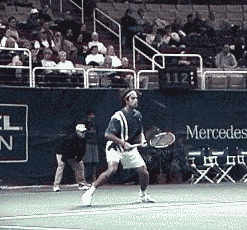
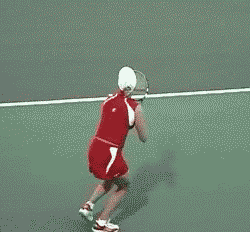
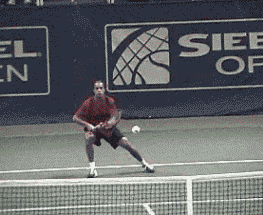
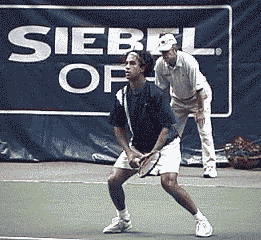
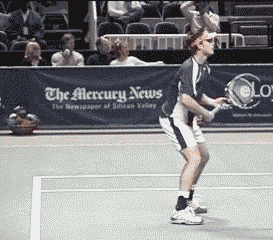
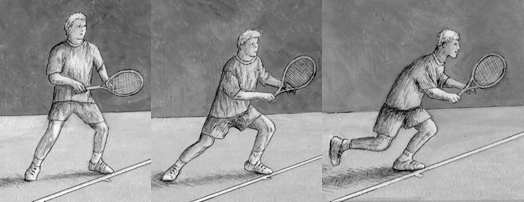
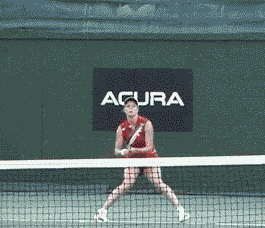
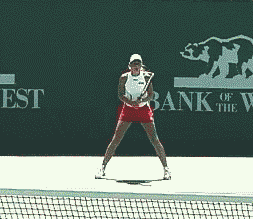
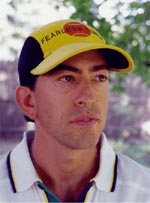 Julio Yacub, B.Sc. , is a native of Buenos Aires, Argentina and holds a B.Sc. in biochemistry with specialties in DNA research and human movement. He has been playing tennis for over 30 years and has an extensive experience in teaching and coaching. Julio is a USTA graduated "High Performance Coach", and has been a member of the U.S. Professional Tennis Association and the Professional Tennis Registry for more than 10 years.
Julio Yacub, B.Sc. , is a native of Buenos Aires, Argentina and holds a B.Sc. in biochemistry with specialties in DNA research and human movement. He has been playing tennis for over 30 years and has an extensive experience in teaching and coaching. Julio is a USTA graduated "High Performance Coach", and has been a member of the U.S. Professional Tennis Association and the Professional Tennis Registry for more than 10 years.